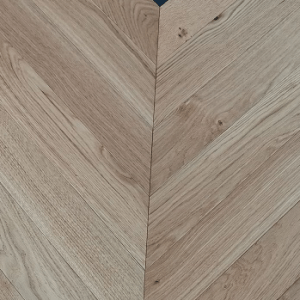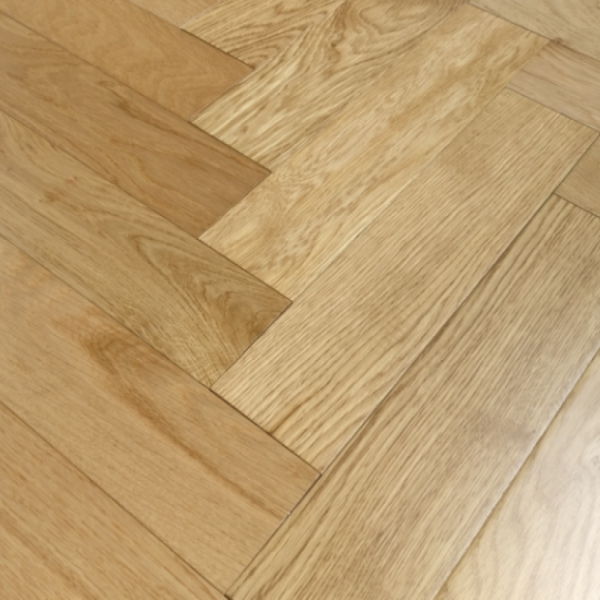Table of Contents
Once you decide to opt for engineered wood flooring, there are a variety of patterned flooring designs to try. Herringbone, chevron, and basket weave come from a similar pattern known as parquet flooring.
These designs have such beautiful forms that elevate your home. Herringbone and chevron floors are trending for a few years now, but there are some clear differences between the two.
What is chevron wood flooring?
A chevron wood floor by Plancher Newlook is achieved by creating a zig-zag pattern. It almost looks like a ‘V,’ and the planks are shorter and narrower. For the chevron pattern, the ends are specially cut at a 45-degree angle where the ends meet. Unlike herringbone engineered flooring, chevron is a modern, sleek choice with geometric patterns.
Chevron flooring is perfect for modern, high-end homes with minimalistic interior décor. The patterns are so distinctive that it almost needs a blank canvas to stand out.

It isn’t easy to DIY chevron wood planks. For herringbone floors, the planks are cut at 90 degrees. But the edges have to be cut at an angle of 45 degrees. This floor needs expertly installed to create the zig-zag pattern.
Some essential features of chevron floors:
- Looks very luxurious with a distinctive European style
- Produces a dramatic effect through the movement of the woods
- Needs a special order, therefore can be expensive
- It is high-maintenance depending on room size
What is a herringbone flooring pattern?
Herringbone floor is a traditional, opulent flooring design. This parquet pattern has a timeless feel with strong character.
The key difference between the herringbone pattern and chevron is that the former has a broken zig-zag pattern. The woods are placed at a 90-degree diagonal angle, looking like a fishbone. These planks have a less tendency to move or expand.
It almost looks like the wooden planks are pushing one another to create the pattern. Natural oak herringbone flooring is used in many houses to create a warm, timeless appeal.

Some of the most notable features of herringbone flooring are:
- It has a more subtle pattern than chevron, which makes it versatile with many home decors
- It is a traditional flooring design than chevron flooring
- The woods are custom-ordered, which makes them expensive
- It needs fewer cuts, and less wood is wasted
Stunning styles for herringbone and chevron floors
Whether you choose a herringbone style floor or a chevron floor, both of these add character and depth to your space. The thing is, each pattern looks very different based on the wood species. For instance, woods like mahogany have a deep, rich texture that has striking designs. However, a wood like pine is more subtle and easy to mimic the traditional flooring styles of 17th century Europe.
A lot of it also depends on the size of the room. Both of these patterns look better in an ample open space. But Chevron pattern looks way better in living rooms where there is a lot of light to play.
Grey herringbone wood flooring is a modern industrial twist on a classic floor design. Grey is a sleek, sophisticated colour that looks stunning for an office with a herringbone design.
For a bold design and statement floor, the chevron pattern looks perfect. It’s unusual, dramatic, and with exotic woods, it gives a nice symmetrical look.
Why are they still trending in 2021?
Even in the 21st century, both of these engineered parquet floorings are ruling the hall of fame. With a new mix of different styles and wood species, they are creating bold statements.
Even commercial spaces like restaurants, coffee shops are doing these patterned floors. One of the new additions is a herringbone or chevron pattern wooden wall. These walls create such a luxurious statement and a piece of art in itself.
You need to know the type of colour palette, stains, and finish you want to understand the patterned flooring. The rest is simple—finding a reliable brand like Floorsave and let your vision come to life! Give them a call or drop by at their store.



